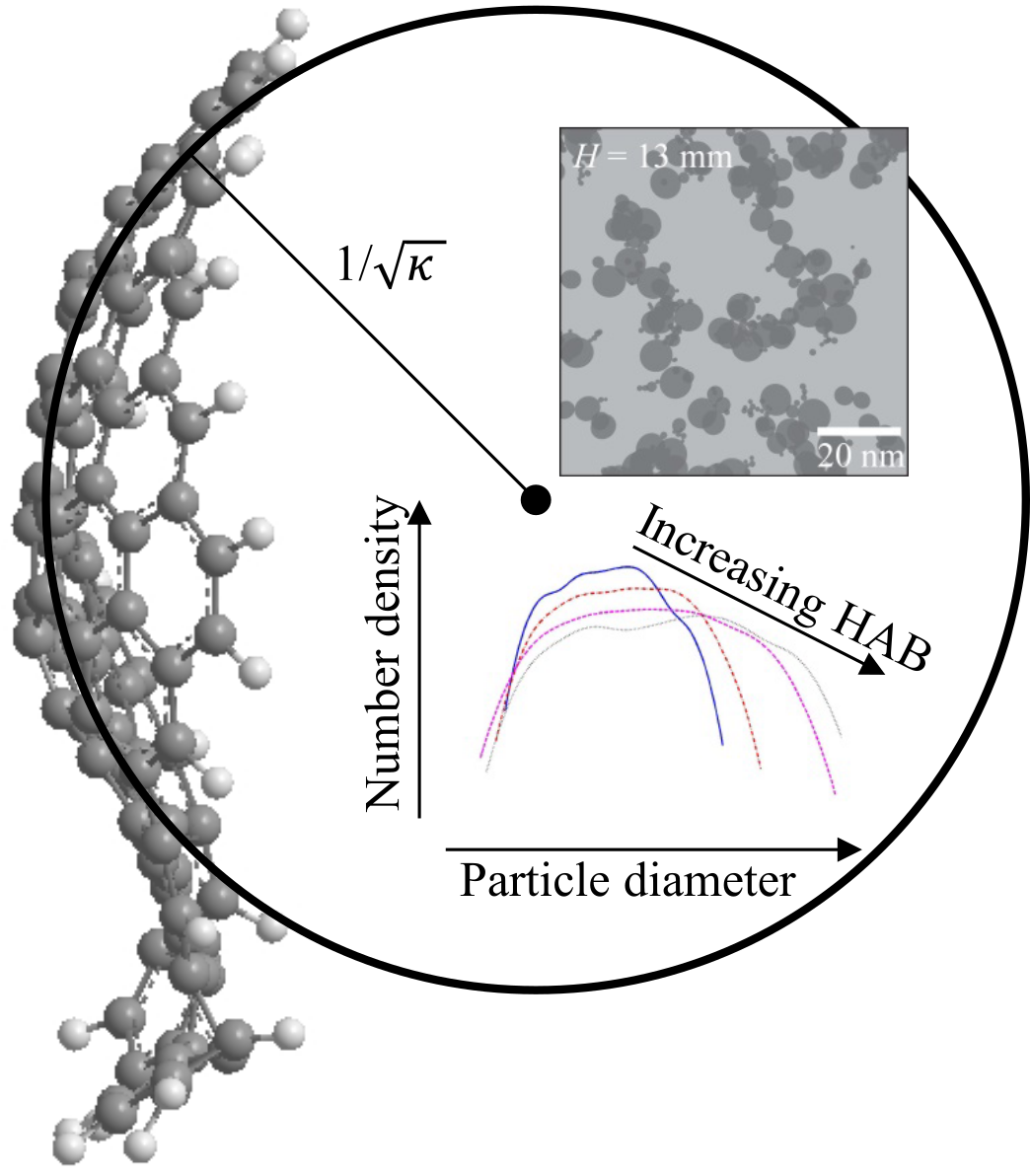Modelling PAH curvature in laminar premixed flames using a detailed population balance model
- Modelling of the Gauss curvature of PAHs
- High resolution atomic force microscopy revealed species with localised π-monoradicals and π-diradicals
 A detailed population balance model, which includes the kinetic Monte Carlo-aromatic site (KMC-ARS) model for detailed polycyclic aromatic hydrocarbon (PAH) growth, is used to compute the Gauss curvature of PAHs in laminar premixed ethylene and benzene flames. Previous studies have found that capping of an embedded 5-member ring causes curvature in graphene edges. In this work, a capping process is added to the KMC-ARS model with the rate coefficient of the capping reaction taken from the work of You et al. (2011). We demonstrate that the Gauss-Bonnet theorem can be used to derive a correlation between the number of 5- and 6-member rings in a PAH and its Gauss curvature (or radius of curvature), independent of where the 5-member ring is embedded within the PAH structure. Numerical simulation yields satisfactory results when compared to the experimentally determined Gauss curvature reported in the literature. Computed and experimental fringe length distributions are also compared and the results suggest that PAHs smaller than the size required for inception are able to condense onto particles.
A detailed population balance model, which includes the kinetic Monte Carlo-aromatic site (KMC-ARS) model for detailed polycyclic aromatic hydrocarbon (PAH) growth, is used to compute the Gauss curvature of PAHs in laminar premixed ethylene and benzene flames. Previous studies have found that capping of an embedded 5-member ring causes curvature in graphene edges. In this work, a capping process is added to the KMC-ARS model with the rate coefficient of the capping reaction taken from the work of You et al. (2011). We demonstrate that the Gauss-Bonnet theorem can be used to derive a correlation between the number of 5- and 6-member rings in a PAH and its Gauss curvature (or radius of curvature), independent of where the 5-member ring is embedded within the PAH structure. Numerical simulation yields satisfactory results when compared to the experimentally determined Gauss curvature reported in the literature. Computed and experimental fringe length distributions are also compared and the results suggest that PAHs smaller than the size required for inception are able to condense onto particles.
- This paper draws from preprint 161: Modelling PAH curvature in laminar premixed flames using a detailed population balance model
- Access the article at the publisher: DOI: 10.1016/j.combustflame.2016.10.004



